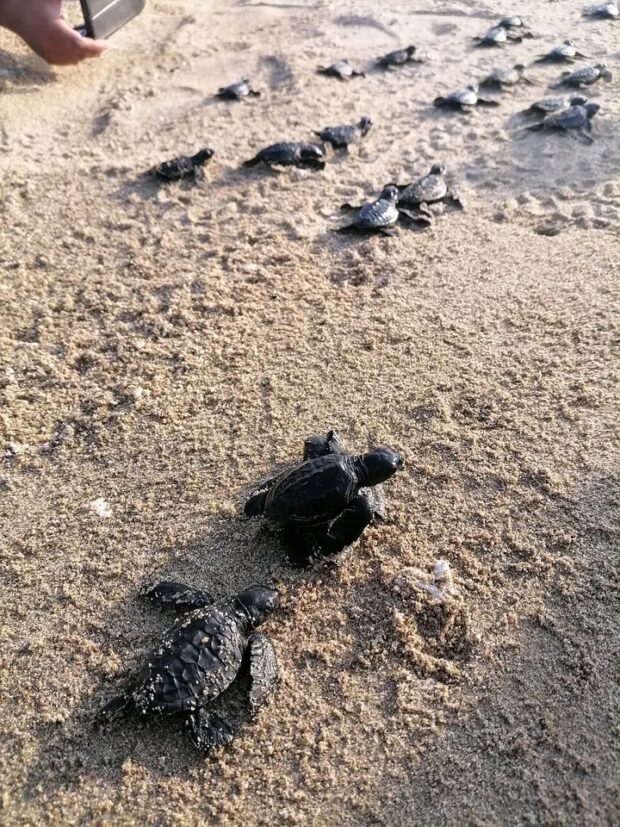
Newly hatched Olive Ridley turtles crawl back to their natural habitat in Sta. Cruz village in Donsol town, Sorsogon province on Thursday, Feb. 8. (Photo courtesy of LGU-Donsol Environmental Management Office Facebook page)
SORSOGON CITY, Sorsogon, Philippines — Fifty-five Olive Ridley turtles (Lepidochelys olivacea) were released to sea on Thursday in Sta. Cruz village in Donsol town, Sorsogon province, according to the Donsol Environmental Management Unit.
The World Wide Fund for Nature (WWF) Philippines, the Donsol Environmental Management Unit, the Ticao-Burias Pass Protected Seascape (TBPPS), and barangay officials were among those who helped in the release of the sea turtles.
Village chief Arlon Pendor said children were playing and accidentally dug up the nest of the turtle.
“Somebody reported to me that children, who were playing, accidentally dug up the nest of the pawikan, so when I saw it, I immediately secured the area. I placed a net around the area,” he told the Inquirer.
READ: 16 endangered baby turtles released to sea in Sorsogon town
READ: Over 5,000 baby turtles released in Tayabas Bay
According to Pendor, they would normally find nesting grounds at least twice a year in Sta. Cruz.
In a social media post before the release of the sea turtles, Pendor said he hoped the turtles would live long and come back to Sta. Cruz to reproduce.
“Go ahead, be stronger and stronger. Later, you will strive and enter the sea of Sta. Cruz. I expect you all to live and come back to Sta. Cruz someday so that you can again multiply here,” Pendor said in a video, talking to the sea turtles.
Olive ridley turtles are classified in the International Union for Conservation of Nature’s (IUCN) Red List of Threatened Species as “vulnerable” due to a decline in population, a restricted range in their occurrence, and the possibility of their extinction within 100 years.